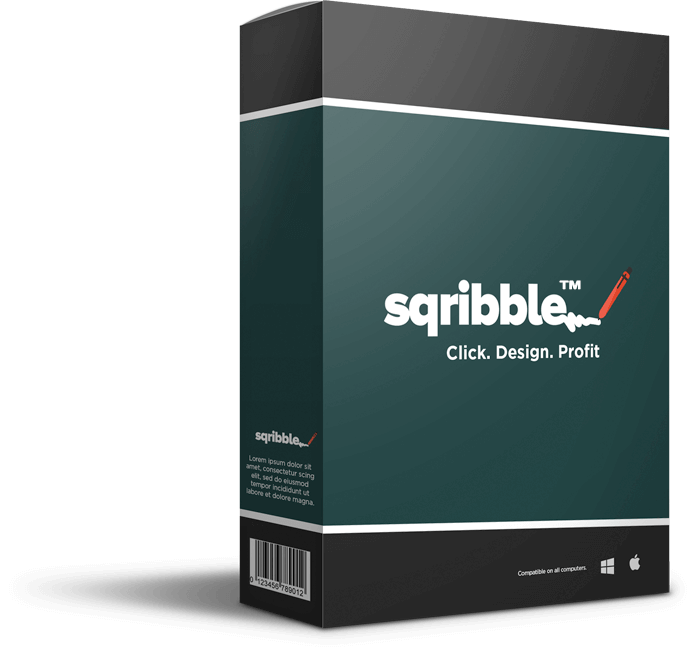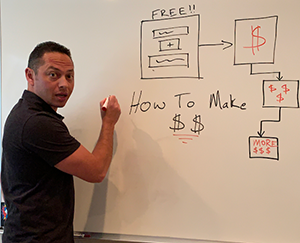Weekend Favs May 18 written by Jordan E read more at Duct Tape Marketing
My weekend blog post routine includes posting links to a handful of tools or great content I ran across during the week. I don’t go into depth about the finds, but I encourage you to check them out if they sound interesting. The photo in the post is a favorite for the week from an […]
Find Ease with Remarketing: The Future of Ad Targeting written by John Jantsch read more at Duct Tape Marketing
The Duct Tape Marketing Podcast with John Jantsch
In this episode of the Duct Tape Marketing Podcast, I interviewed Larry Kim, founder and CEO of Customers.AI – a first party, website visitor identification and remarketing pixel. Also founder of WordStream – provider of Google and Facebook ad management software for tens of thousands of customers globally. Through his insights and experience, Larry reveals the future of ad targeting and the role of remarketing in the post third party data era.
Key Takeaways
Questions I ask Larry Kim:
[00:54] Are you still involved with WordStream?
[01:28] When jumping ship did you have a business idea in mind or did you stumble on the opportunity?
[02:05] In the Ad world, what exactly is Remarketing?
[02:56] When it came to ROI, how effective was retargeting during your WordStream days?
[04:11] When it came to Remarketing what changed, especially with pixels and privacy?
[06:11] What is the level of degradation for Retargeting as we knew it?
[08:10] When big companies comes in and kill third party data, does that reduce or increase their revenue?
[11:37] Would you agree that Retargeting made marketers a little lax and lazy?
[16:12] How do you easily explain the technology of Remarketing?
[17:09] Do you see any trends or technologies that you think are going to further impact this space?
[18:33] Does customer.ai integrate with any CRM?
[19:09] If somebody wanted to find out a little more, how would they explore and get started with a tool like yours?
More About Larry Kim:
Like this show? Click on over and give us a review on iTunes, please!
Connect with John Jantsch on LinkedIn
This episode of The Duct Tape Marketing Podcast is brought to you by ActiveCampaign
Try ActiveCampaign free for 14 days with our special offer. Exclusive to new customers—upgrade and grow your business with ActiveCampaign today!
John Jantsch (00:08): Hello and welcome to another episode of the Duct Tape Marketing Podcast. This is John Jantsch. My guest today is Larry Kim. He is the founder and CEO of customers ai, a first party website, visitor identification and remarketing pixel. He is also the founder of WordStream, provider of Google and Facebook ad management software for tens of thousands of customers globally acquired by Gannet in 2018 for approximately $200 million. So Larry, welcome to the show. I wonder what in the world you’re doing hanging around with the Lowly Duct Tape Marketing podcast at this point.
Larry Kim (00:47): Thanks John. It’s great to be here. It’s just awesome.
John Jantsch (00:51): So I think I had you on back in the day to talk about WordStream. Are you involved in any way, shape, or form with WordStream or that’s completely out of it.
Larry Kim (00:59): It was acquired by the companies and so not to other things.
John Jantsch (01:03): Yeah. I’m curious, did you take some time and say, I’m just going to, I’ve picked up a little money here, I’ve got some ability to enjoy myself. Or did you just immediately start thinking of what’s next?
Larry Kim (01:16): It’s still a long career ahead and digital marketing is a fascinating field, so I just jumped right into the next thing.
John Jantsch (01:25): Yeah. So we’ll talk about customers.ai, but is there anything in particular that you looked out and said this is the next thing to tackle, or do you feel like you just stumbled into an opportunity
Larry Kim (01:39): When you sell a business, they ask you to not recreate the same business for obvious reasons and that’s perfect, reasonable? So I was just looking for opportunities in digital marketing, but outside of the Google use,
John Jantsch (01:54): Yeah, I mentioned in the intro what customer AI is, website, visitor identification, remarketing, pixel. A lot of people, a lot of listeners know what remarketing is, but maybe we ought to start there. In the ad world, what exactly is remarketing
Larry Kim (02:09): Incredibly effective way of doing ad targeting to people who have recently visited your website? And the reason why this works so smashingly well is just that people are two to three times more likely to engage with ads for brands that they’ve heard of and targeting it figures. It solves for that by narrowing the ad target, the people who have recently been to your website, which means that they’re in market for the products and services that you’re selling as well as they’ve heard of you. It’s the crown jewel of or has had been historically the crown jewel of ad target methods and was responsible for a lot of the growth digital ads that were driving, driving company growth.
John Jantsch (02:52): So back, particularly in your word stream days, and maybe you don’t have an exact number, but how likely or how much better was if you could retarget somebody? How much more effective was that in terms of a conversion, in terms of return on ad spend, things of that nature?
Larry Kim (03:09): It’s an order of magnitude better. The engagement rate was two to three times higher that implied substantially lower cost per click. But also that excitement, that higher engagement would carry through to purchases or apps because they’re excited to engage. And what we found was in advertising there, this concept of ad fatigue where it’s like the engagement rate, even a fatigue plus 20 impression remarketing targeted ad will still perform better than a brand new interest or demographic based targeted ad.
John Jantsch (03:47): The ones I hate is when I see it 20 or 30 times after I’ve made the purchase and I’m still seeing the ads, those are the ones I hate
Larry Kim (03:54): This opportunity. They should be segmenting into an upsell ad flow.
John Jantsch (04:00): Of course. Yeah. Alright, I get the concept. I’ve visited the website and so now you’re going to show me Target or you’re going to show me ads because you know a lot about me, or at least one thing about me. I’ve visited your website. What’s changed in the world of pixels and targeting and privacy? And again, maybe that’s a big question with a lot of answers, but when it comes to remarketing, what’s changed?
Larry Kim (04:23): It’s nearly dead that this entire phenomenon was a hundred percent reliant on third party, third party cookies. So the way that retarget would work for Facebook or Google was that you would log into Facebook or Gmail or some Google service on either your browser or on your device. And using the power of third party cookies, they could share data between one browser or tab to another and someone visited Duct Tape Marketing or customers ai. It used to be the case that if you install a Facebook or Google ad Pixel on your website, it could attempt to look for, but the Google Pixel could look for a Google third party cookie. The Facebook pixel could do the same and it would then pick up an ID if it was there. And 50% of the times this would work, I would then phone home that ID to the mothership saying, John visited customers of ai, so let’s add John’s ID into Larry’s ad manager so that you can retarget to ’em.
(05:29): So this whole thing is very tenuous right now. It started in 18, a Firefox drop, so then 2019 iOS third market opt in rather than opt out. And the Chrome is the last shoot of drop here. I dunno if you saw the news yesterday, they extended the time to end, so time six months from now or something, a year early, early 25 is what they’re saying now. But it is in the process of being sunsetted and we’re already that retargeting signal just because of all the other players in the ecosystem, excluding Chrome is still like 50, 60% of the signal been in the decline for five years now.
John Jantsch (06:11): So what’s the level of degradation now of that type of tactic?
Larry Kim (06:16): So at the heyday seven, seven, you were able to get using a pixel, it would vary based on where you lived and who your audience was, but on average they could ID somewhere around 50% of the people who were visiting your website integrated by call it 70, 80% over the last five years.
John Jantsch (06:38): So what’s driving these changes? Is it just consumer privacy theoretically, or is it just legislative backlash?
Larry Kim (06:47): The thing that people don’t realize about the Facebook and Google ad pixel, what’s this, a massive Trojan horse. The use case was limited to what we’ve described here. Just being able to ID the people who visited your website and show ’em ads, it might’ve not been such a big deal. But the other thing that Google Facebook pixels were doing was they were phoning home like every bit of user journey data for every visitor, but then uploading that to their ad systems to then power the display network capabilities of those ad platforms. So it was like they had this pixel on 10 million sites and you would visit a fishing site and then Google would ascertain that Johns must be going through a fishing trip. And then other competitors in the ecosystem, there’s 10 million advertising, would then be able to run ads using display targeting segments like interested in Phish or something. That’s exactly the mechanism of how that data was being populated. And I think that is very questionable and it wasn’t really well disclosed and it did run afoul of a lot of regulatory practices. The Google and Facebook weren’t necessarily even disclosing that to the people who were in some of the pixels. There was some concern, but that is the genesis of the demise of third party cookies.
John Jantsch (08:10): So some of these bigger players, the Googles of Facebook, even Apple now jumping on killing third party data, does that put a big dent in their ad revenue as well, or does it actually increase ad revenue because targeting goes away?
Larry Kim (08:25): So they’re putting on a bold face. They’re saying, you know what, we have this new Facebook is calling it audience plus ad targeting, and they’re saying, you don’t need data, you need r AI will figure out who your perfect customers are. Okay. And it’s mixed reviews. This is nothing new. It’s rebranding of similar audience target. Exactly. And look like audience Target was there in 2010 when niaz started, and it was always the backup kind of stepchild of ad targeting methods where if you didn’t have any signal, you would go to similar ad target, similar audience targeting and it just reversed the pecking order. They’re saying now the default is similar audience targeting, and if you happen to have data, then that’s still an option, but it’s not required now does it actually work? Sure, it can work a little bit, but apex of what they had going back in 2017, this was pretty hard.
John Jantsch (09:28): It’s my pleasure to welcome a new sponsor to the podcast. Our friends at ActiveCampaign. ActiveCampaign helps small teams power big businesses with the must have platform for intelligent marketing automation. We’ve been using ActiveCampaign for years here at Duct Tape Marketing to power our subscription forms, email newsletters and sales funnel drip campaigns. ActiveCampaign is that rare platform that’s affordable, easy to use, and capable of handling even the most complex marketing automation needs. And they make it easy to switch. They provide every new customer with one-on-one personal training and free migrations from your current marketing automation or email marketing provider. You can try ActiveCampaign for free for 14 days and there’s no credit card required. Just visit activecampaign.com/duct tape. That’s right. Duct Tape Marketing podcast listeners who sign up via that link. We’ll also receive 15% off an annual plan. That’s activecampaign.com/duct tape. Now this offer is limited to new active campaign customers only. So what are you waiting for? Fuel your growth, boost revenue and save precious time by upgrading to active campaign today.
Speaker 3 (10:40): Duct Tape Marketing really helped me to shave at least six to eight months off of work that I was dreading after leaving the corporate world. Even before I participated in the agency intensive training, I had already landed my first customer. This in essence, more than paid for my investment in Duct Tape Marketing. What
John Jantsch (10:58): You just heard was a testimonial from a recent graduate of the Duct Tape Marketing certification intensive program for fractional CMOs marketing agencies and consultants just like them. You could choose our system to move from vendor to trusted advisor, attract only ideal clients, and confidently present your strategies to build monthly recurring revenue. Visit DTM world slash scale to book your free advisory call and learn more. It’s time to transform your approach. Book your call today, DTM world slash scale. And as an advertiser, it made a lot of us lazy too, didn’t it? Because you really could get such good targeting information. A lot of people stopped worrying about first party data and even about building email lists and things of that nature. Where are we today?
Larry Kim (11:52): Yes, that’s exactly the thing. It was like this weird phenomenon between, for about a decade between 2010 and 2018 ish, we had Google and Facebook trying to kill each other by providing the best possible data for their advertisers and the best possible tools. And I think advertisers were the beneficial of this free, it wasn’t free, but they were licensing the data to you through their ad products. But just even having that access was something that marketers ever had before. And providing very granular analytics to understand the ROI of that ad spend was quite remarkable in terms of where we’re headed at. These companies are now trillion dollar behemoths and they have monopolies and there’s just not, with the specter of regulatory concerns overhead, there’s just no upside to sticking your neck out there and trying to provide really great ad targeting in 20 or so. They’re making things more opaque. In case in point, Google Analytics, it used to have people explore data. You could understand more about the people and the demographics of the people who are visiting your website. They ripped it out. The audience managers and Facebook used to have audience insights that’s ripped out. So I’m saying Google Analytics used to be able to get very granular user journey and data. It’s been replaced with sampling and where they don’t tell you the exact numbers, they just surround to the nearest s. So does that answer your question?
John Jantsch (13:19): Yeah, absolutely. So really a lot of where I’m really going with this is a lot of what you’re doing at customers AI is really trying to help people recover the ability or the capability to do remarketing. So if third party data is not the answer, what is the answer or what’s the technology now that’s allowing some recovery of this?
Larry Kim (13:39): We need to lean into your first party data and we just got very complacent and lazy and forgot to about the importance of engaging in marketing, driving traffic to your site through top of phone campaigns. And then what we do is we have something a little bit comparable to what the Facebook and Google pixels used to do, but it’s limited to a first party context. So what we can do
John Jantsch (14:01): Is, so maybe I hate to do this, but maybe explain what first party data is first,
Larry Kim (14:06): It’s your competitive advantage. It’s your understanding of the market in terms of the people who are visiting your website, the information that they fill out on your website, the pages that they view. It’s the data in your CRMs, in your HubSpot, in your MailChimp. It’s all that information. And third party data on the other hand is ZoomInfo, where you could just buy a list of DES that was just purchase data or ads where it’s like you specify an audience and they just happen to know who’s looking to do a fishing trip this weekend. And that’s third party data. So what we’re saying is the pendulum was swamping the other direction. We cover these remarketing use cases, but in a first party content, meaning we will provide you with a ton of information about the people who are visiting your own website. So this is augmenting your first party website data with all sorts of valuable information.
(15:09): I’m sure all of your visitors will be familiar with this idea of augmenting your visitor data with whatever. Yeah, geotargeting is one of ’em big ones like city state. And we can print that to include identity as well as attributes of the people who are visiting. So email, phone number, mailing address, et cetera. And this is still your first party data. I’m not just giving you a list of ideal customers. You have to bring them into your funnel first. And then what we can do is we can in a first party way, augment the data and unlock different use cases such as email marketing, such as retargeting. So that’s in the case of retargeting. We can securely encrypt those identifiers and send them back to whichever ad platforms that you care about in a way where it’s just your data being sent to your account and it’s not populating 10 million ad accounts. So this is what we’re talking about like compliance and privacy. Compliance. Any questions?
John Jantsch (16:11): So is there an easy way to explain the technology? It’s some sort of server to server connection or
Larry Kim (16:17): Yes. Obviously we can’t be using third party cookies, then we would have the same fate as the ad scripts that are being blocked. And obviously we can’t be using browser scripting calls because that’s also what Google uses. It is a server to server call. So different recognizing that the ad platform is recognized that the scripting communication channel was likely to be a little bit more tenuous moving forward. They have all built sort of these server PIs where vendors like customers AI can now securely and reliably encrypt and send over that information so that you can still remarket like it’s now 2018 again.
John Jantsch (17:03): So I always like to, especially somebody like you that’s watching what’s coming. Any trends or technologies that you think are coming that are going to further impact this space
Larry Kim (17:14): As marketers? I think the most successful marketers are the ones that can tell the future. And easiest way to tell the future is to look at the past. And because we just go around and around before Google and Facebook, were invented and were providing these really radically amazing targeting offerings, ad targeting capabilities and analytics. The companies that were doing really well were old school big companies that had a lot of data like Walmart or ha’s entertainment or other big data companies. And they had a huge advantage over smaller retailers or vendors. And that advantage had been diminished over time because Google and Facebook were democratizing the availability of this third party data. And I think where it’s moving back is it’s where we’ve been before. It’s like the companies that are going to be amazing are the ones that have a lot of data. So you should be really taking stock of all the first party data that you’re generating, making sure that it’s fully augmented using first party pixel technology so that you can maintain all that valuable information and then act on it In terms of powering email automation campaigns, advertising campaigns, we can do mailers, they can send postcards because we have the address et first cetera.
John Jantsch (18:31): Yeah, yeah. One more in the weeds question. Does customers io, am I getting that right?
Larry Kim (18:37): Ai.
John Jantsch (18:38): Ai, sorry, integrate with any CRMs or is it all you have to integrate through a Zap or something like that?
Larry Kim (18:45): So we do have emailing capabilities and email automation capabilities within a platform. However, a lot of businesses, they have preferred CRMs or ESPs, like email service providers that they wish to work with. We have native integrations with a couple of the big ones and including kla and Lane Mail and a couple dozen high, high level one
John Jantsch (19:07): And
Larry Kim (19:08): Dozens of
John Jantsch (19:08): Others. Awesome. Well if somebody wanted to find out a little more about whether or not this makes sense for them, how would they explore and get started with a tool like yours?
Larry Kim (19:17): There’s a free trial or on our website, customers have AI and just put the pixel on your website. I believe it includes 500 leads or seven free days of utilization, whichever comes first. So if you have a high traffic website, I think that might be very interesting. You’ll see all the IES of the folks who are visiting your site and you can tell your friends that. Guys, come click on my website. I just want to see, I’ll see all these interesting names.
John Jantsch (19:46): Awesome. Alright, Larry, again, appreciate you stopping by. This is an interesting evolving topic. People can find out more at customers AI and hopefully one of these days we’ll see you out there on the road.
Sign up to receive email updates
Enter your name and email address below and I’ll send you periodic updates about the podcast.
Recommended Story For You :

How To Make $3493 Commissions Without Doing Any Selling

Successful dropshippers have reliable suppliers.

People Think I Use A Professional Voiceover Artist. NO! I Just Use Speechelo!

Make Money Testing Apps On Your Phone Or Tablet

Make More Money or Lose Everything

Sqribble Is The ONLY eBook Creator You’ll Ever Need.

Work & Earn as an Online Assistant

Create Ongoing Income Streams Of $500 To $1000 Or More Per Day

It's The Internet's Easiest Side Business.


